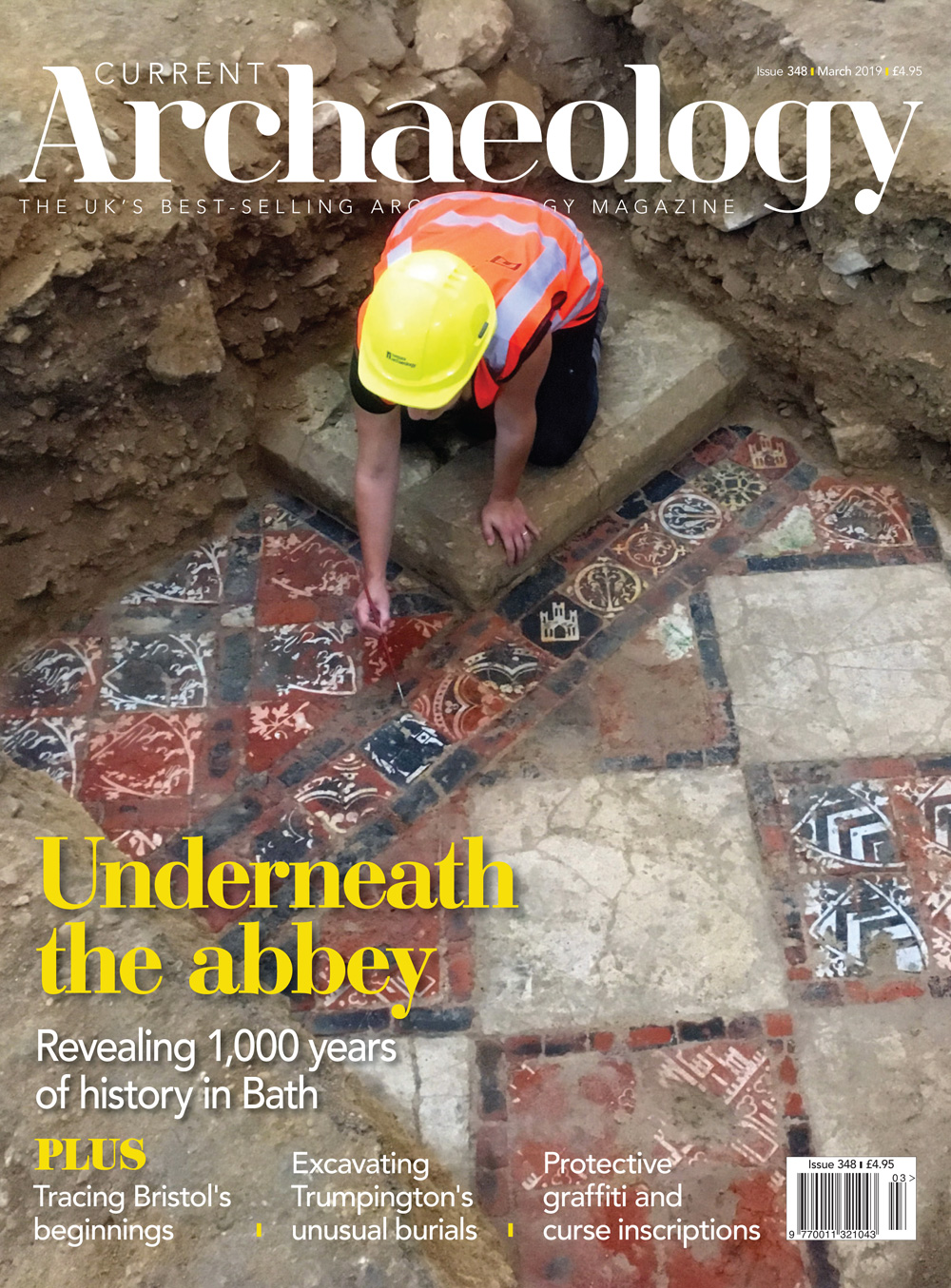This month finds us making our final preparations for our annual conference on 8-9 March – I look forward to meeting many of you there, and if you haven’t yet bought your ticket it’s not too late. For the latest details of CA Live! 2019, including our complete timetable, turn to p.62.
While planning a conference can feel like a monumental undertaking, the logistical challenges of building a cathedral are rather more daunting. The city of Bath was once home to one of the largest medieval cathedrals in England – today, its remains lie beneath Bath Abbey, but recent archaeological work has illuminated over 1,000 years of religious life on the site.
This ecclesiastical edifice must have served as an unmistakable landmark for centuries. So too, it seems, did a pair of Neolithic barrows that stood on the edge of what is now Trumpington. Forming the focus of Bronze Age and Iron Age activity, these mounds attracted communities who left behind enigmatic and unusual burials.
Equally enigmatic is the birth of Bristol, which seems to have sprung into being in the medieval period with no Roman predecessor. This issue’s third feature traces the evolution of a bustling port city.
Our final two articles examine ‘magical’ inscriptions, though serving dramatically opposed purposes. At Bolsover Castle, we find a host of protective graffiti safeguarding the celebrated 17th-century riding school of the ‘Father of Dressage’ William Cavendish; while rather less benevolent, though intriguingly modern, is the 19th-century curse recently identified at a farm near Llandudno.
Carly Hilts
/n
IN THIS ISSUE:/n
FEATURES/n
UNDERNEATH THE ABBEY/n
Uncovering more than 1,000 years of religious life in Bath
Bath Abbey lies on top of what was one of medieval England’s largest cathedrals, as well as an Anglo-Saxon monastery. Recent archaeological work has brought centuries of secrets to light once more.
LIFE AMONG THE DEAD/n
Revealing riverside rites at Trumpington
Having explored the Anglo-Saxon history of Trumpington in CA 343, here we delve into its prehistory, examining the funerary practices of long-vanished communities in Cambridgeshire.
BUILDING BRISTOL/n
Exploring the making of a city
Recent research into the history of Bristol demonstrates how the city developed, highlighting the large-scale urban planning of the 12th and 13th centuries that made it into the bustling metropolis we know today.
DON’T SCARE THE HORSES/n
Unpicking 17th-century protective graffiti at Bolsover Castle’s Riding School
A survey at Derbyshire’s Bolsover Castle has recorded a wealth of protective symbols from the Stuart era, seemingly defending the site’s celebrated riding school.
WITCHCRAFT AT WERN WEN/n
Interpreting a 19th-century curse from north Wales
Magical markings did not end with the Stuarts: etchings on a beam at a farmstead near Llandudno tell of later superstitious practices with less benevolent intent.
NEWS/n
Marylebone cold case; Exploring the lives of London’s 19th-century poor; Roman lead coffins recovered in Surrey; Cernunnos in Cambridgeshire; The mystery of Leochel-Cushnie’s modern monument; Science notes; Revisiting the Mote of Urr; Finds Tray
REGULARS/n
Comment
Joe Flatman excavates the CA archive
Context
Colouring the past: Wick Barrow, Somerset
Reviews
Late Iron Age Calleva: the pre-Conquest occupation at Silchester Insula IX; Neolithic Britain: the transformation of social worlds; Unearthing Childhood: young lives in prehistory; London’s Crypts and Catacombs; Clifton Quarry, Worcestershire: pits, pots and cereals; Lime Kilns: history and heritage
Museum
Meeting Brighton’s ancestors: the Elaine Evans Archaeology Gallery at Brighton Museum & Art Gallery
Calendar
Our selection of exhibitions and events
Conference
The latest details about Current Archaeology Live! 2019
Sherds
Chris Catling’s irreverent take on heritage issues
Odd Socs
The City of Rochester Society

